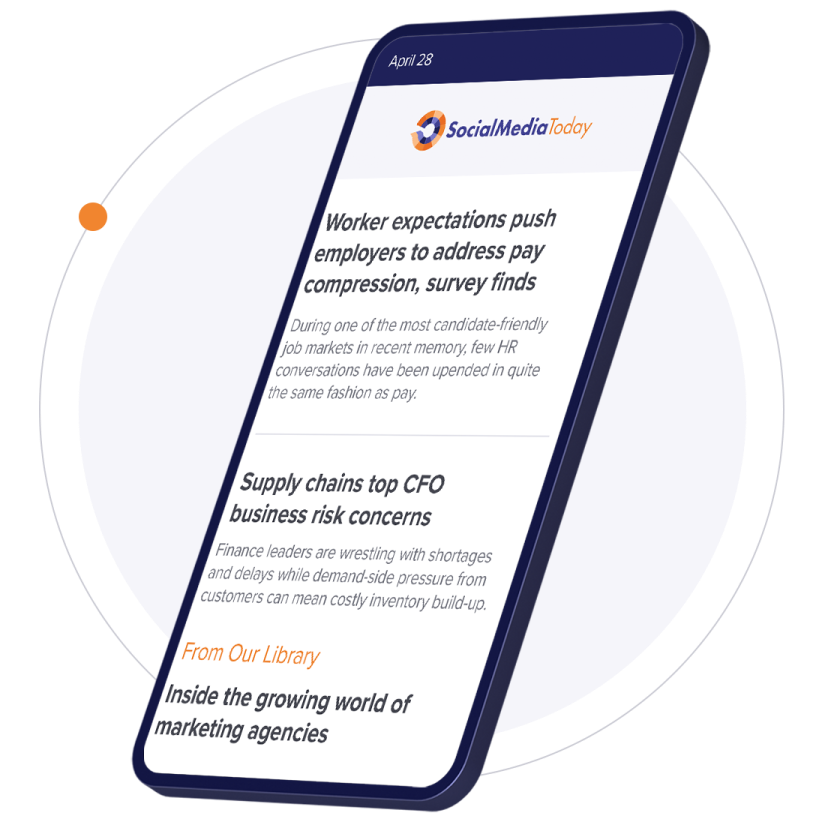As I’ve been saying to anyone who’ll listen over the past two years, while TikTok is growing at an astronomical rate, and is on track to become the most popular social media platform overall (maybe not in overall users, but in total time spent), a key impediment to its dominance could be its lack of creator revenue opportunities, which is the weak point that both Meta and YouTube are trying to exploit in their efforts to curb the short-form video app’s growth.
Which is why this new initiative is so important. Today, TikTok has announced its new ‘TikTok Pulse’ program, which will enable advertisers to place their ads alongside the most popular content in the app, while it will also provide a new revenue-share pathway for creators, without them having to organize separate brand deals themselves.
As explained by TikTok:
“Marketers today are looking for the opportunities to be on the pulse of relevant cultural moments. TikTok Pulse places brands at the heart of TikTok communities and alongside the trending content that is driving conversation and action.”
It works like this - through TikTok Pulse, brands will be able to place their ads alongside TikTok Clips that are in the top 4% of top performers on any given day. Those performance benchmarks are based on views and engagement, but essentially, it will enable brands to ensure that they see maximum views by being tagged to trending content.
Pulse advertisers will be able to choose from 12 categories to place their ads, so you’ll be able to position your branding next to the most culturally relevant content in ‘beauty’, ‘fashion’, ‘gaming’, etc. Ads will only appear alongside ‘verified content’ to ensure brand safety, while additional post campaign measurement tools, including third party brand suitability and viewability verification, ensure transparency in the process.
But the true key element is this:
“With TikTok Pulse, we will begin exploring our first advertising revenue share program with creators, public figures and media publishers. Creators and publishers with at least 100k followers will be eligible in the initial stage of this program. We're focused on developing monetization solutions and available markets so that creators feel valued and rewarded on TikTok.”
So TikTok’s most popular creators will now be able to gain revenue just by posting in the app, which is similar to YouTube’s Partner Program, and will be an essential step for TikTok as it looks to maximize its growth opportunities.
Because right now, its Creator Fund just ain’t doing it.
As outlined by YouTube creator Hank Green in this video, TikTok’s Creator Fund, currently its primary source of revenue share for creators, is highly variable, with payouts declining as TikTok’s overall performance improves.
For smaller creators, getting any cash payout for your TikTok clips is a big deal, but for more established stars, who are reliant on the income that they generate from their uploads, they need a more sustainable, stable pathway, as this is essentially their business, and their primary way of generating income.
The Creator Fund doesn’t provide that, but maybe, with these users generating strong views with each of their clips, the Pulse program could provide a better avenue for such, which could ultimately keep them posting to the app more often, instead of drifting off to YouTube instead.
Make no mistake, TikTok is not even close to YouTube’s revenue share tools yet, with YouTube paying out billions to creators every year through its Partner Program. YouTube generated $28.8 billion in ad revenue in 2021, with a big chunk of that then being passed onto creators, so TikTok has a way to go to catch up. But at the same time, being the trending app of the moment also has its perks, and if TikTok can establish even a fairly equitable monetization pathway for creators, that will likely be enough to keep them posting, as opposed to building their YouTube presence in isolation instead.
At the same time, YouTube Shorts views are rising (Shorts clips have already surpassed 5 trillion cumulative views), and with Shorts essentially acting as a promotional tool for your main YouTube channel, where creators can make real money, it too is an alluring prospect, which could eventually become the channel of choice for more users and creators.
That’s why this is such a big deal for TikTok, and while it’s only in its initial stages, and we don’t have the full details of how it will work just yet, and how much creators will get paid, it’s the next evolution for the app, which could end up being the thing that secures its future.
As Vine discovered long before TikTok, monetizing short-form video is hard, and when Vine couldn’t offer adequate revenue share to its top stars, they abandoned the platform en masse, taking their large audiences with them. It may seem like TikTok is beyond that risk, but it’s essentially in the same position, and if popular creators turn their back on the app, that could be the beginning of the end, if it can’t stem the flow.
eCommerce integrations offer another pathway, as do brand/creator collaborations, but all of these require extra effort, as opposed to creators simply focusing on their content, and getting paid for its performance.
That’s what YouTube offers, which is why it’s a better platform for creators overall. And now, TikTok’s taking its first steps along the same path.







